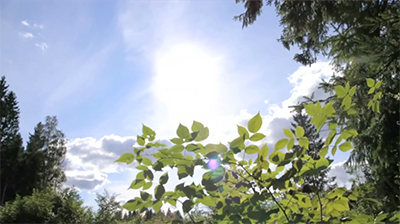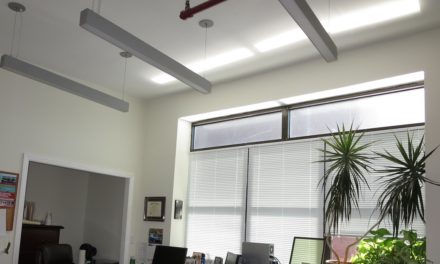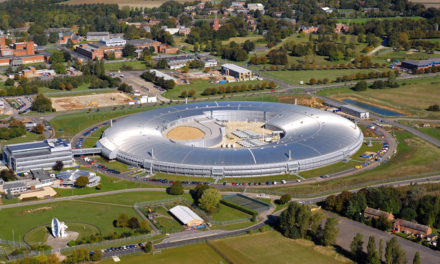At SerraLux, we’re understandably interested in the history and science behind daylighting technologies. Recently, we had the good fortune to speak to Loughborough University Professor John Mardaljevic, a leading expert on daylighting, about the development and future of daylighting research, measurement, and design solutions.
SL: Professor Mardaljevic, let’s talk for a moment about current daylighting practices. Historically, daylighting initiatives are often driven by a desire to save energy. In your interactions with others in the daylighting space, what other adoption drivers are you seeing and how important are they?
John Mardaljevic: Without a doubt, energy saving is an important consideration. However, if that was the sole driver, we would not have windows at all. Instead, we would have super-insulated walls with LED lighting to provide illumination. Such spaces would have little appeal for the majority of building occupants—they would much prefer to be elsewhere, and they would not perform effectively if compelled to stay in such places.
We now appreciate that good daylighting has consequences for the long-term health, well-being, and productivity of building occupants. The non-visual effects of daylight illumination are believed to be of great importance for the maintenance of a healthy sleep-wake cycle, or circadian rhythm. The mechanisms are not fully understood, and it is not yet known what the preferred exposure levels should be, nor if existing daylight guidelines are effective for promoting and maintaining a healthy circadian rhythm. What’s not in doubt is the importance of providing daylight to building occupants, whether they be in offices, schools, hospitals, factories etc.
SL: There are a lot of architectural design principles that play a role in obtaining optimum daylight performance in office buildings. Which ones do you feel are key?
JM: No simple answers here. The one recommendation I give is that architects familiarise themselves with the daylighting designs that appear to work well—and then try to determine what is it about the context and local climate that works with that particular solution. Because, the same solution—in a building with a different aspect or located in a different climate—may not work so well.
SL: An understanding of colour rendering, the use of natural light, and its effect on works of art is critical for architects specializing in museums. Are those principles and practices carrying over into the practices of other architects?
JM: Colour rendering is an issue if the interior space has non-neutral, fixed-tint glazing, or if highly saturated colours are used in the interior decor. The key concern appears to be the spectrum of illumination from artificial lighting, particularly LEDs. This has resulted in the emergence of a market for reliable and inexpensive handheld spectrometers to measure artificial light spectra in buildings tools that can also be used to measure the spectra of daylight illumination if required. So there is some crossover, yes.
SL:When architects and lighting designers seek to achieve the optimum combination of daylight, lighting controls, and artificial lighting technologies, what advice to you give them?
JM: I’d suggest seeking out the very good advice that is available in the various design booklets, for example, the CIBSE Lighting Guides. Best-practice examples are invaluable; however, an individual must apply their own judgement to determine if the lessons learnt from the exemplar case study can be applied to a particular design.
SL: You’re Professor of Building Daylight Modelling—quite a mouthful! I’m guessing your journey to this title, Professor Mardaljevic, started with your doctoral thesis, which focussed on the modelling and simulation of daylight performance. In it, you questioned some previously accepted methodologies for measuring building illumination.
JM: With hindsight, I suppose that’s true. I was modelling the flow of light and was surprised to learn that the sole quantitative measure used to assess a building’s daylighting performance was founded on a single overcast sky condition, called “the daylight factor.” This idea of using the ratio of internal-to-external illuminance to rate daylight performance may have originated as far back as 1895. With the instruments available back then, taking just a single measurement was no small task. It was impractical to record varying levels under changing sun and sky conditions.
SL: So that methodology was ripe for an update?
JM: This original conception greatly simplified rating a space for daylight, and should be considered an inspired solution—for its time. However, a consequence of this simplicity is that the daylight factor tended to be insensitive to variables, like climate and building orientation (although occasionally corrections are applied to make a crude accommodation for the fact that daylight exposure varies). In any case, the contribution of sunlight was ignored altogether.
SL: That seems like a fairly serious oversight. Obviously, finding an improved approach to daylight measurement is critical to developing the metrics that make the case for daylight’s benefits. How did the measurement methodology shift?
JM: By the 1980s, computer simulation was becoming an option. Hour-by-hour sun and sky conditions could be derived using the same climate data routinely employed for building thermal modelling. Thus we could develop what eventually became known as climate-based daylight modelling (CBDM). I devised the rigorous validation of this methodology using a “gold standard” dataset from the UK Building Research Establishment. Over time, CBDM projects proved beyond doubt that the approach was suited to real-world problems, in effect challenging—and changing—the standard “daylighting factor” measurement model.
SL: And giving a more accurate and more flexible daylight measurement, which in turns helps us assess and quantify the benefits. Obviously, designers considering incorporating daylight design are looking at the metrics: the energy efficiency savings, and the improvements to occupant’s performance. How can daylight simulation provide those metrics—and which are the most important?
JM: The question of daylight metrics is a “hot topic.” Anyone who wishes to promote daylight where there is an associated cost is, in effect, “selling” daylight. When attempting to sell any commodity where the supply cannot be guaranteed at a steady rate, the first two questions asked by a potential purchaser are: How much of it will I get? And how often will that occur?
For daylight, those questions cannot be answered by the traditional “daylight factor” measurement approach. Climate-based daylight modelling (CBDM) can begin to answer those questions because this method does predict how much light there is, and its occurrence throughout the year. In CBDM, one usually evaluates outcomes in terms of one or more metrics, which are distilled from the raw output data.
Two such metrics are daylight autonomy (DA) and useful daylight luminance (UDI). Both have their advocates—and indeed detractors. I personally favour UDI because it gives an indication of the degree to which an upper threshold for illuminance, say 3,000 lux, is exceeded.
SL: Can you describe the essential features of a “well-tempered” daylight environment—an environment where daylight is well used and manage? What do you consider are the main trade-offs to achieving optimum daylight performance?
JM: The “well-tempered” daylit environment is one where either the fixed architectural form, or an effective automated system, ensures high levels of useful daylight in the space while minimising the visual discomfort and glare.
For example, in a typical “glass box” office building there is limited scope for the basic architectural form to offer effective shading from excessive daylight levels, and the internal daylit environment will largely be “tempered” by users manually deploying shades, or perhaps some automated system controls the moderation of daylight levels.
The manual use of shades is sub-optimal, often to a very large degree: blinds stay down and the lights remain on long after the glare condition has passed. An effective automated shading system can lead to a better utilisation of daylight for spaces. Low-rise buildings have the greatest potential for good intrinsic daylighting since they can make effective use of a number of daylighting strategies (e.g. brise-soleil, rooflights, light-wells, light shelves, deep window reveals etc.), often in combination, to shade and redirect daylight.
In addition to automated devices, some static advanced glazing materials may also contribute to the creation of a well-tempered environment if they can modify the flow of light to reduce excessive illumination near windows and/or increase daylight penetration to the back of the space.
SL: Much of your work has been based on modelling with Radiance software, using the algorithms developed by Greg Ward. For many years, Radiance was the main tool used for modelling daylight performance, but other software is now available. From where you sit, what more is needed to produce optimum modelling software for daylighting?
JM: Hard to say. Currently, one key development area is the ability to model arbitrary bidirectional scattering distribution functions (BSDFs). This supports the modelling of almost any conceivable glazing system, whatever the optical properties.
SL: In terms of regulatory changes, and LEED and BREEAM specifications, what changes do you see in the next 3 years regarding the use of daylight in buildings?
JM: In 2013, the UK Education Funding Agency made CBDM a mandatory requirement for the evaluation of designs submitted for the Priority Schools Building Programme (PSBP). School designs submitted to the PSBP must achieve certain “target” criteria for the useful daylight illuminance (UDI) metric.
This is the first major upgrade to mandatory daylight requirements since the introduction of the daylight factor more than half a century ago. While perceived as long overdue in some quarters, in others the move controversial and is not without its critics. In the US, an “Approved Method” to predict spatial daylight autonomy was published by the Illuminating Engineering Society (IES) at the close of 2012.
Moreover, in 2013, version 4 of LEED included the IES Approved Method for spatial daylight autonomy as one of the options for obtaining the daylighting credit. Although not a mandatory requirement, it will be interesting to learn how many choose this option to demonstrate compliance.
From these developments, it wold appear that we are set to see an expansion of climate-based metrics for daylighting in guideline and compliance documents.





